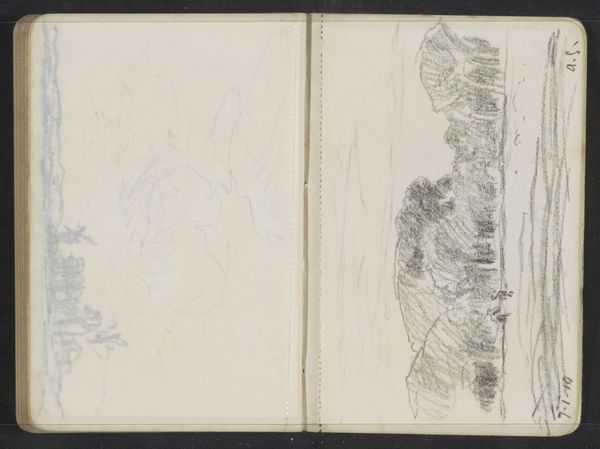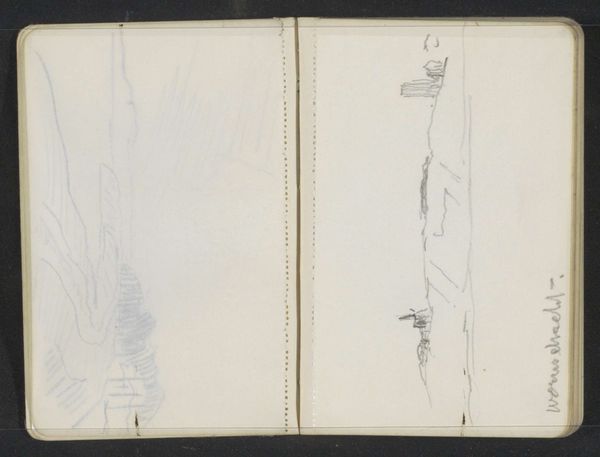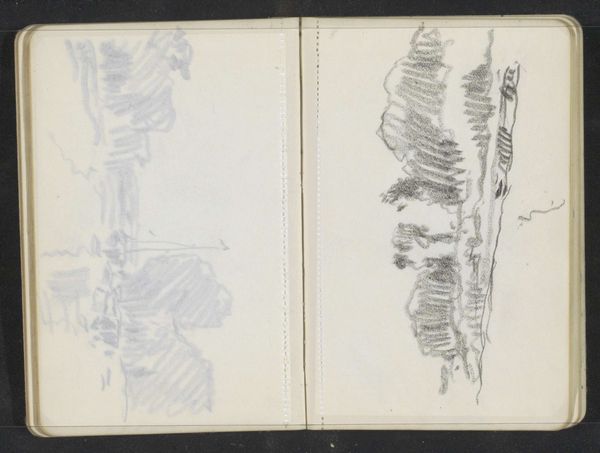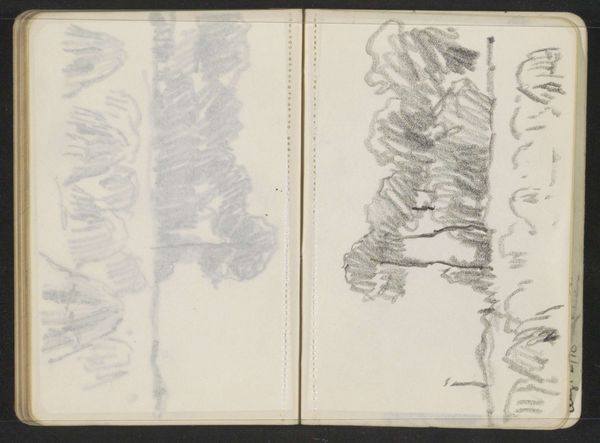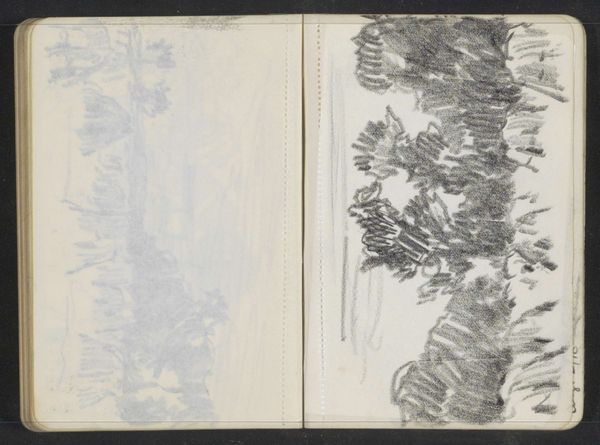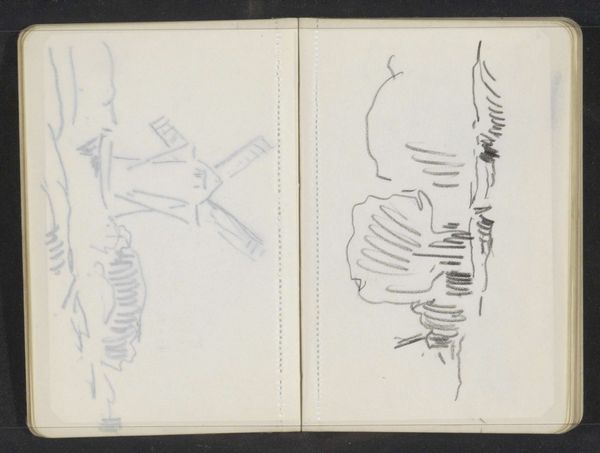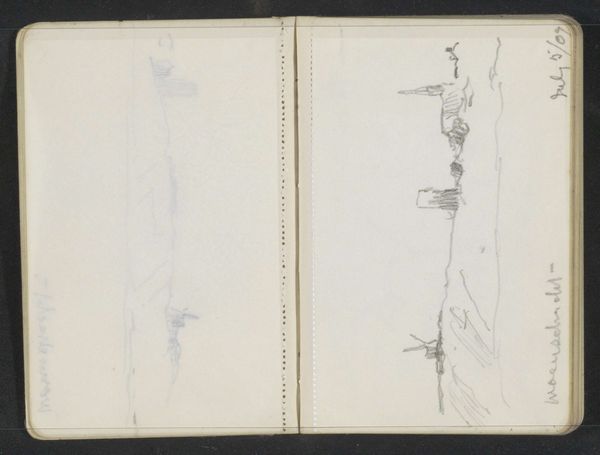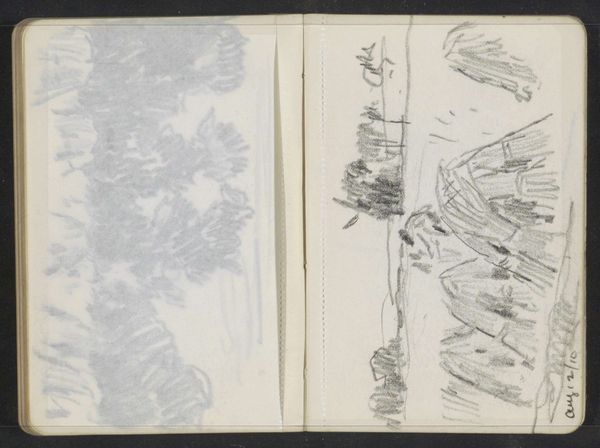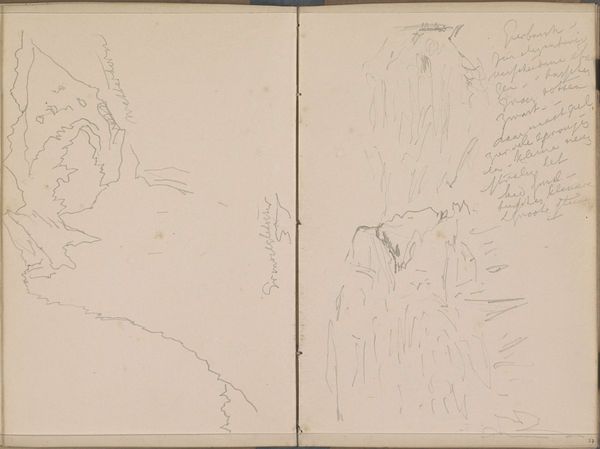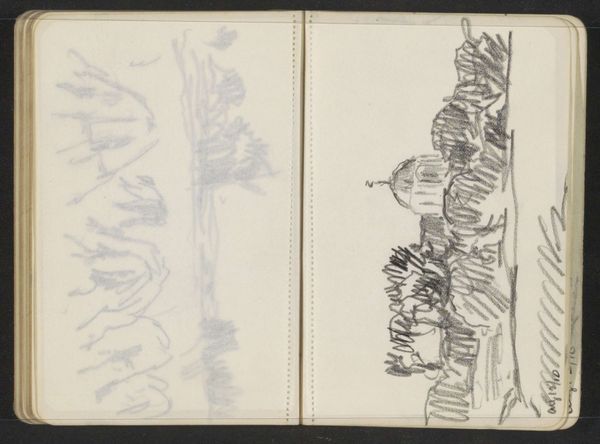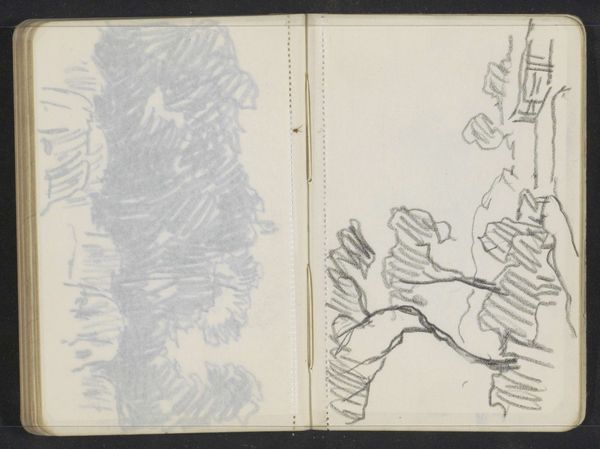
drawing, paper, pencil
#
drawing
#
landscape
#
paper
#
pencil
#
abstraction
Copyright: Rijks Museum: Open Domain
Curator: Welcome. Before us is "Landschap met een molen," or "Landscape with a Mill," a pencil drawing on paper by Alexander Shilling, likely from the 1900s. Editor: It's intriguing, almost spectral. The lines are so faint, like whispers of forms. It evokes a sense of transience, of nature barely contained on the page. The imagery is soft, and undefined. Curator: That softness might speak to Shilling's context. Early 20th-century art saw a turn inward, seeking subjective truth rather than photographic realism. Abstraction started influencing even landscape depiction. What we might take as unfinished, they saw as a representation of fleeting sensation. Editor: Absolutely. Windmills often symbolize change, perhaps freedom from oppression and transition. The slightness of the pencil suggests the ethereal nature of those changes, like something remembered but fading away. Also, on the right-hand page, is it actually a dense cluster of dark trees? It feels almost like a barrier, or boundary. Curator: Or maybe, in terms of how it operated publicly, such a piece served as study rather than as a finished artwork intended to challenge artistic norms, allowing the artist to experiment outside formal exhibitions. The landscape genre offered the perfect setting for an emerging symbolic abstraction. Editor: But it goes further than experimentation, I think. Landscapes can be understood as internal mindscapes. Those trees I see carry all sorts of heavy symbolism connected to growth and rootedness, maybe this links Shilling back to a past from which he felt uprooted or that he valued? I see themes of history in the symbol of a mill as an emblem for human endeavors versus natural immensity. Curator: That really enriches our interpretation, pointing beyond mere technique into how an era of cultural anxieties found refuge and projection in these artistic languages. Thanks for teasing out how those symbols can hold deep emotional significance and link the individual work to wider cultural meanings. Editor: My pleasure. It reminds us that an "unfinished" drawing like this isn't simply incomplete. It's a visual poem, open to resonant interpretation.
Comments
No comments
Be the first to comment and join the conversation on the ultimate creative platform.
